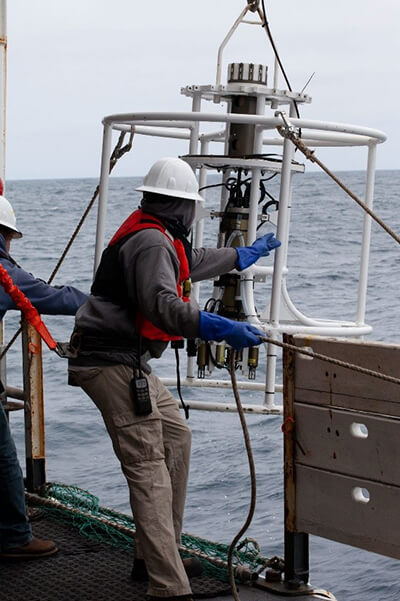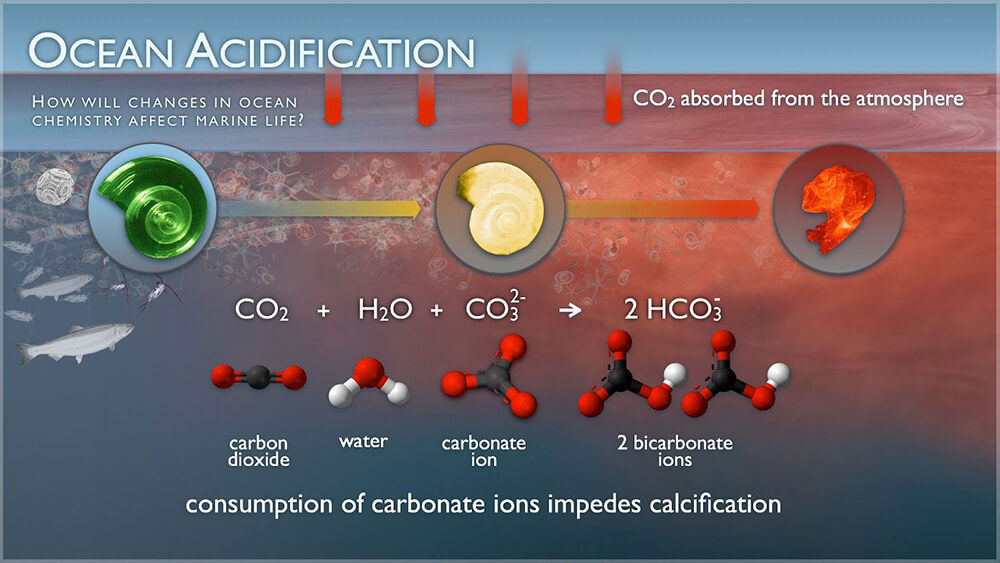Climate Change

Conservation Issue
Anthropogenic-driven climate change is one of the leading issues facing resource managers in the 21st century. Like many disturbances to the marine environment, climate change may act synergistically with other stressors, exacerbating other impacts. Understanding how local management actions can abate, adapt to, or mitigate the effects of a changing climate is critical to Monterey Bay National Marine Sanctuary (MBNMS) management of water quality, maritime heritage, and both living and non-living marine resources. This document highlights key data necessary to inform sanctuary management, but MBNMS recognizes that climate change will broadly impact the ecosystem and have synergistic effects with other stressors. MBNMS is interested in and supportive of climate-based work across disciplines and hopes to develop and support research efforts to that end.
Description
Increased atmospheric carbon emissions, among other factors, are causing shifts in global climate, which can impact local ecosystems in unique ways. Future climate scenarios will alter a range of environmental conditions in the marine environment, which in turn will heavily alter ecosystem structure, function, and services. Increasing sea surface temperatures, sea level rise, decreasing pH, lowered oxygen, altered upwelling patterns, increasing wind variability, and extreme precipitation events are predicted for the Monterey Bay region and will have emergent and lasting impacts on sanctuary resources and coastal populations. Place-based managers planning for the future need oceanographic monitoring infrastructure, targeted studies on the adaptability of key resources, and predictive ecosystem-based climate change models that fit local ecologies. Because the impact of climate change will intersect with other issues and research needs, incorporating climate variability into other research efforts will be just as important as targeted climate change research.
Data and Analysis Needs
- Predicted shifts in abiotic conditions at a fine spatial scale relevant to MBNMS management
- Predicted impacts to sanctuary resources over the short (5–10 years), medium (10–50 years), and long term (50–100 years)
- Conservation tools that can be used to mitigate climate change drivers (e.g., blue carbon, biotic pH buffering) and impacts (e.g., biodiversity change, ecosystem function alteration)
- A crew member from the NOAA ship Bell M. Shimada deploys a conductivity, temperature, and depth (CTD) sensor. Repeated measurements of the water column can establish a record of change. Photo: Chad King/NOAA
- Ecological leverage points for intertidal and subtidal communities
- The status of and changes in historically native species and newly established species undergoing range shifts or invasions
- Characteristics that support or undermine the capacity of human communities to respond to climate impacts
- Ecosystem services most at risk from climate and ocean acidification changes and methods to increase their resiliency
Potential Products
- Formal research partnerships to improve fine-scale monitoring and forecasting of climate drivers
- Trackable indicators, data products, and forecasts of biologic and human responses to climate change
- Documents (e.g., climate vulnerability analysis, management strategy evaluations) geared toward understanding potential management options staff can take to mitigate climate change impacts locally
- Directed research studies and primary scientific literature on insufficiently addressed information needs
Suggested Scientific Approach and Actions
- Perform scientific literature review to address information needs
- Determine the most influential variables that indicate rapid climate change in MBNMS
- Determine what resources are most vulnerable to climate change
Key Partners
Monterey Bay Aquarium Research Institute, Moss Landing Marine Labs, Monterey Bay Aquarium, National Centers for Coastal Ocean Science

For more information about this assessment, contact Steve.Lonhart@noaa.gov.

